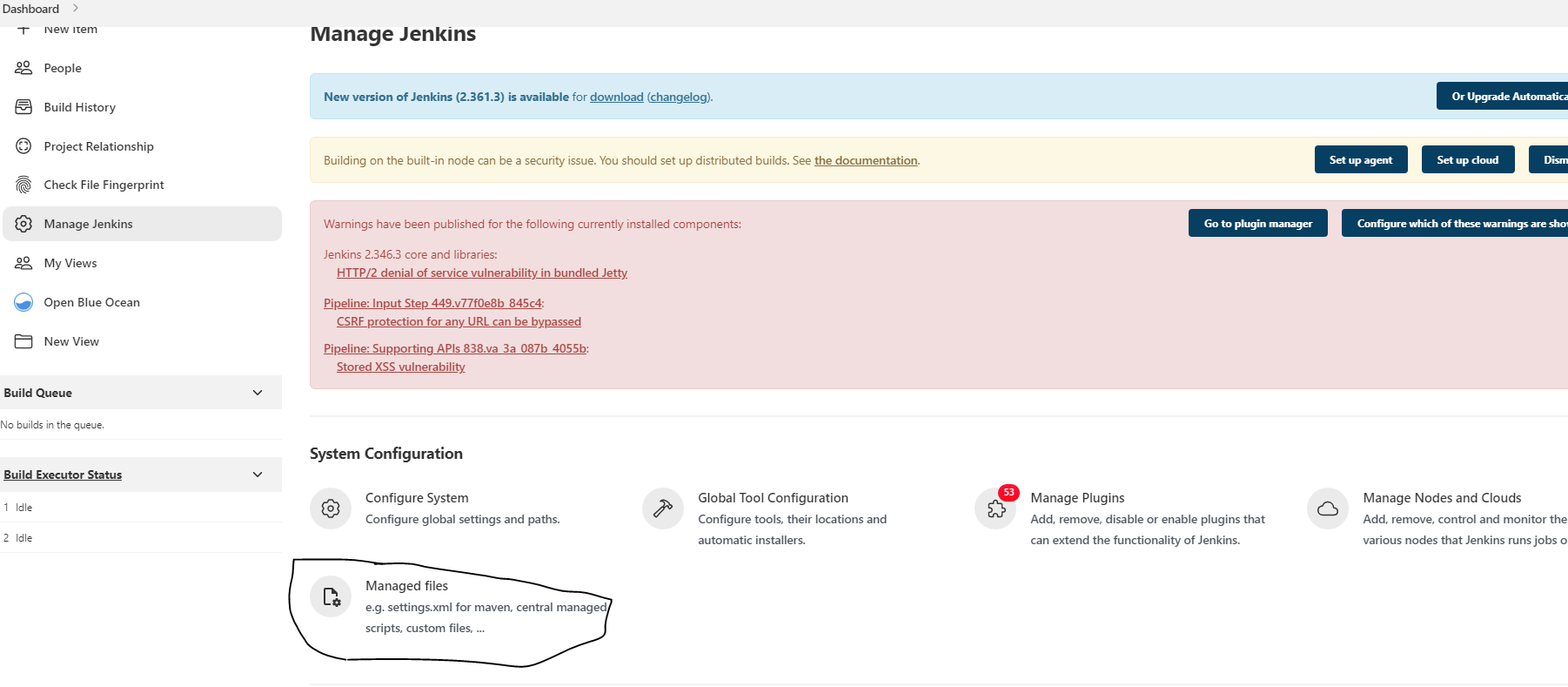使用 docker 运行 jenkins 的安装配置及使用
版本信息
- Centos-7 3.10.0-1160
- Docker Engine 19.03.15
- jenkinsci/blueocean Jenkins 2.346.3
安装步骤
下载镜像
官方镜像仓库 中搜索 jenkinsci/blueocean,下载最新镜像
docker pull jenkinsci/blueocean |
启动 jenkins 容器
创建数据目录
mkdir /data/JenkinsData_blueocean |
启动 jenkins 容器
docker run -d -p 8080:8080 --name jenkins \ |
-v /var/run/docker.sock:/var/run/docker.sock- 在需要使用 Jenkins 构建 Docker 镜像时,Jenkins 容器中的 docker 客户端需要连接到宿主机的 Docker server-v /data/JenkinsData_blueocean/:/var/jenkins_home/- 数据持久化到宿主机目录-u root- 容器中使用root用户运行,要使用 Jenkins 构建 Docker 镜像时,默认的jenkins用户无权限访问/var/run/docker.sock
防火墙开放端口
iptables -I INPUT 7 -p tcp -m multiport --dports 8080 -j ACCEPT -m comment --comment "Jenkins" |
查看初始密码
初始密码会打印在日志里面
docker logs jenkins |
使用日志中显示的密码登陆 web。
Jenkins pipeline script 语法
Jenkins pipeline script 基本格式如下
pipeline { |
agent 命令
agent 指令告诉 Jenkins 在哪里以及如何执行 Pipeline 或者 Pipeline 子集。 所有的 Pipeline 都需要 agent 指令。 [2]
下面的 pipeline 使用 docker 做为执行环境,并指定 docker 镜像,当执行 Pipelin e时,Jenkins 将会自动运行指定的容器,并执行 Pipeline 中已经定义好的步骤 steps:
pipeline { |
agent any 指令指示 Jenkins 为整个流水线分配一个执行器 (在 Jenkins 环境中的任何可用代理/节点上)和工作区
环境变量
环境变量(environment)可以设置为全局的,也可以是阶段(stage)级别的,阶段(stage)级别的环境变量只能在定义变量的阶段(stage)使用 [3]
Jenkins 流水线通过全局变量 env 提供全局环境变量,它在 Jenkinsfile 文件的任何地方都可以使用。Jenkins 流水线中可访问的完整的环境变量列表记录在 ${YOUR_JENKINS_URL}/pipeline-syntax/globals#env
Jenkinsfile (Declarative Pipeline) |
如果你使用 Build with Parameters 选项将流水线配置为接受参数,这些参数将作为 params 变量的成员被访问。 [5]
假设在 Jenkinsfile 中配置了名为 Greeting 的字符串参数,它可以通过 ${params.Greeting} 访问该参数
**引用环境变量时,如果使用引号,需要使用 "(双引号),不能使用 '(单引号) **
post 命令
因为 post 部分保证在 Pipeline 结束的时候运行, 所以我们可以添加通知或者其他的步骤去完成清理、通知或者其他的 Pipeline 结束任务。 [4]
pipeline { |
常见用法
凭证使用方法
Usernames and passwords
在 Manage Jenkins -> Manage Credentials 中添加 kind 为 Username with password 的凭据。
在 Pipeline 中配置环境变量,使用方法 credentials() 调用已配置的凭据,需要的参数为 credentials 的 ID 信息
pipeline { |
在 stages 中可以通过 ${harbor_credentials_USR},${harbor_credentials_PSW} 分别调用 username 和 password [1]
environment 中变量的值为其他命令的输出
在 environment 中需要定义变量,变量的值为其他命令的输出,等同于 shell 中的如下定义
DATE=`date +%Y%m%d%H%M` |
在 Jenkins 的 environment 中需要使用以下方式
environment { |
.trim() 去除变量最后的换行。
配置文件管理插件 Config File Provider
多个配置中如果有公共的配置,可以将其进行统一管理,使用 Config File Provider 插件,安装后管理页面(Manage Jenkins)会多出 Managed files 菜单项,进入后 Add a new Config 可以添加配置,同时指定 id 和 Name。
示例内容,格式为 yaml,调用用时可以使用 readYaml file:"${CONFIG_FILE}" 读取内容
system: |
调用方式
configFileProvider( |
fileId- 为创建配置时的idvariable- 将配置文件内容临时存储于指定的文件名中targetLocation- 将配置文件拷贝到${WORKSPACE}/${targetLocation}
脚本式 Pipeline 语法中执行 shell 命令
在脚本式 Pipeline 语法中,需要执行 shell 命令及获取命令输出时,可以通过 sh 指令执行
git_commit = sh(returnStdout: true, script: "git rev-parse HEAD").trim() |
常见错误
find: /usr/share/jenkins/ref: No such file or directory
使用 Docker 运行 Jenkins,启动 Jenkins 容器时报错: find: /usr/share/jenkins/ref: No such file or directory,Jenkins 容器无法启动。
可能原因及解决办法
可能是因为不小心删除了某些文件导致,删除本地镜像,重新拉取镜像,启动正常。